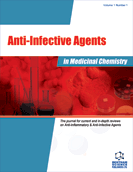Abstract
In recent years, vancomycin has received appreciable attention as an antibiotic drug of last resort. The generally accepted mechanism entails interference with bacterial cell wall synthesis. There is negligible attention to other modes, even though drug action is often multifaceted. This review provides a hypothesis for an additional mechanism of antibacterial action based on the polyphenol residue in the glycopeptide. The functionalities present are monophenol, resorcinol and hydroxybiphenyl, all of which have the potential to produce electron transfer (ET) metabolites capable of generating reactive oxygen species (ROS) and oxidative stress (OS). Considerable literature is presented in support of the thesis. Drug toxicity is rationalized based on the fundamental approach to vancomycin action. This review represents another example in support of the prior ET-ROS-OS unifying mechanism for anti-infective and toxic action. Novel insight may aid in improved drug design.
Keywords: Vancomycin, mechanism, polyphenol, electron transfer, radicals, antibiotic, toxicity.
 34
34





















